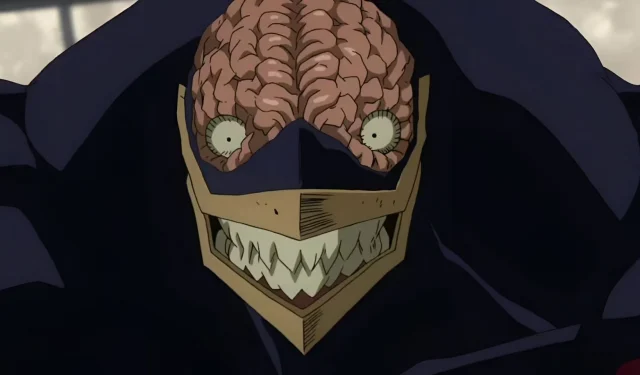The power scaling within My Hero Academia has long been a hot topic among fans. Many attribute the inconsistencies to later developments, such as the emergence of Armored All Might or the escalated power levels seen during the final war. However, the roots of these disparities are much older, tracing back to the introduction of the USJ Nomu in the inaugural season of the series.
This bio-engineered villain was specifically designed to pose a formidable challenge to All Might, setting a power standard that the narrative has often struggled to uphold as it evolved.
Initially presented as a nearly unbeatable adversary capable of pushing even the Symbol of Peace to his limits, the USJ Nomu’s position in the broader power hierarchy introduces significant inconsistencies, impacting the entire series’ structure.
Disclaimer: The following content is a theoretical exploration reflecting the author’s perspective.
The USJ Nomu: A Catalyst for Power Creep
Engineered to counter All Might at his peak, the USJ Nomu emerged as a groundbreaking creation featuring multiple quirks like shock absorption and rapid regeneration. During their intense confrontation, All Might found it necessary to push beyond his limits to overcome this formidable opponent.
This introduction positioned the USJ Nomu as one of the most powerful beings in the My Hero Academia universe. Nonetheless, this setting created an immediate scaling dilemma.
If the League of Villains already possessed a creature that could challenge a weakened All Might in the very first arc, it follows that subsequent Nomu would need to be even more powerful to maintain narrative tension. Indeed, the series introduced High-End Nomu, which were suggested to surpass the USJ variant in their capabilities.
This discrepancy led to a significant narrative misalignment—if these new iterations were genuinely stronger than the USJ Nomu, they ought to have been nearly invincible, only able to be confronted by the prime All Might.
Instead, viewers witnessed characters such as Endeavor, Hawks, and numerous pro heroes battling these supposedly superior beings, which diminishes the established threat level of the original USJ Nomu and undermines All Might’s previous struggle against it.
The Enigmatic Disappearance of the USJ Nomu
Another notable inconsistency is the absence of the USJ Nomu in later story arcs. Given All For One’s calculating nature and his consistent strategy of leveraging every available asset, the conspicuous lack of the original Nomu in major confrontations is noteworthy.
The in-universe rationale remains ambiguous: Was the USJ Nomu considered outdated compared to its newer counterparts? Was it rendered ineffective after its clash with All Might? Or did the narrative simply overlook it? This absence complicates the understanding of the series’ power dynamics, as reintroducing the USJ Nomu could necessitate a reevaluation of how the threat posed by other villains is perceived.
The USJ Nomu’s distinctive combination of quirks also prompts questions regarding the power scaling of later iterations. Its ability to absorb shocks significantly mitigated the impact of All Might’s physical attacks, compelling him to unleash over 300 powerful strikes to finally subdue the creature.
This defensive trait, alongside its regenerative capabilities and raw power, should theoretically render any subsequent or “improved”Nomu almost invincible against standard heroes. However, in later episodes, these supposedly stronger Nomu appear more susceptible to attacks from quirks like Endeavor’s flames and coordinated team strategies.
Conclusion
The USJ Nomu symbolizes both a peak in villain threat levels during the early episodes of My Hero Academia and the onset of significant power scaling inconsistencies. Its introduction established an early benchmark that later story developments have struggled to adhere to logically.
As the narrative progressed toward its climax, the initial decisions regarding character power levels created cascading effects that ultimately diminished the sense of growth and challenge typically characteristic of a shonen series.
Recognizing the USJ Nomu’s role within the power hierarchy sheds light on why numerous fans perceive a growing disconnection in the series’ power scaling from its foundational premises. This illustrates how even the most carefully crafted character designs can profoundly impact the narrative consistency of a long-running series.


